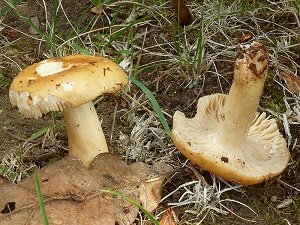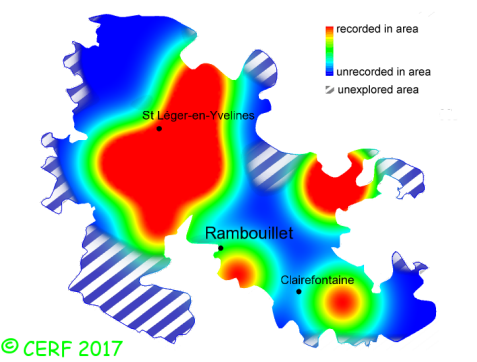| Russula foetens Pers.:Fr. |
|
|
|
|
|
|
The cap is yellow ochre to orange; its margin is strongly striate. The cap surface is smooth, viscid or sticky. The stem is whitish to ochre, hollow, turning brown when touched, without ring. The flesh is unchanging; its taste is acrid; the odour is fetid, of burnt tire, fish or chlorine; its texture is grainy (breaking like a chalk stick). The gills are cream to yellowish, free to adnate, distant . The spore print is cream. This species is mycorrhizal. It grows on the ground, in broad-leaved and coniferous woods, with spruce, birch, beech, oak. The fruiting period takes place from June to December.
Chemical tests : flesh becoming salmon pink when in contact with iron sulphate; positive reaction to Ga´ac; negative reaction to sulpho-vanillin. Distinctive features : Viscid ochre-brown to honey-brown cap surface (peeling one quarter or halfway to centre); white gills turning creamy yellow when old, weeping colourless droplets like dew when young; clearly furrowed margin, somewhat warty or grainy Russula foetens is infrequent and scattered in the forest of Rambouillet, and is frequent, more generally speaking . | ||
|
page updated on 14/01/18

